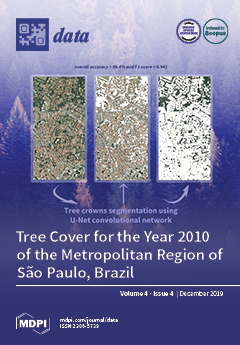Open AccessArticle
Land Cover Mapping using Digital Earth Australia
by
Richard Lucas, Norman Mueller, Anders Siggins, Christopher Owers, Daniel Clewley, Peter Bunting, Cate Kooymans, Belle Tissott, Ben Lewis, Leo Lymburner and Graciela Metternicht
Cited by 24 | Viewed by 6623
Abstract
This study establishes the use of the Earth Observation Data for Ecosystem Monitoring (EODESM) to generate land cover and change classifications based on the United Nations Food and Agriculture Organisation (FAO) Land Cover Classification System (LCCS) and environmental variables (EVs) available within, or
[...] Read more.
This study establishes the use of the Earth Observation Data for Ecosystem Monitoring (EODESM) to generate land cover and change classifications based on the United Nations Food and Agriculture Organisation (FAO) Land Cover Classification System (LCCS) and environmental variables (EVs) available within, or accessible from, Geoscience Australia’s (GA) Digital Earth Australia (DEA). Classifications representing the LCCS Level 3 taxonomy (8 categories representing semi-(natural) and/or cultivated/managed vegetation or natural or artificial bare or water bodies) were generated for two time periods and across four test sites located in the Australian states of Queensland and New South Wales. This was achieved by progressively and hierarchically combining existing time-static layers relating to (a) the extent of artificial surfaces (urban, water) and agriculture and (b) annual summaries of EVs relating to the extent of vegetation (fractional cover) and water (hydroperiod, intertidal area, mangroves) generated through DEA. More detailed classifications that integrated information on, for example, forest structure (based on vegetation cover (%) and height (m); time-static for 2009) and hydroperiod (months), were subsequently produced for each time-step. The overall accuracies of the land cover classifications were dependent upon those reported for the individual input layers, with these ranging from 80% (for cultivated, urban and artificial water) to over 95% (for hydroperiod and fractional cover). The changes identified include mangrove dieback in the southeastern Gulf of Carpentaria and reduced dam water levels and an associated expansion of vegetation in Lake Ross, Burdekin. The extent of detected changes corresponded with those observed using time-series of RapidEye data (2014 to 2016; for the Gulf of Carpentaria) and Google Earth imagery (2009–2016 for Lake Ross). This use case demonstrates the capacity and a conceptual framework to implement EODESM within DEA and provides countries using the Open Data Cube (ODC) environment with the opportunity to routinely generate land cover maps from Landsat or Sentinel-1/2 data, at least annually, using a consistent and internationally recognised taxonomy.
Full article
►▼
Show Figures





